Plastic pollution found on shipwrecks
- Published
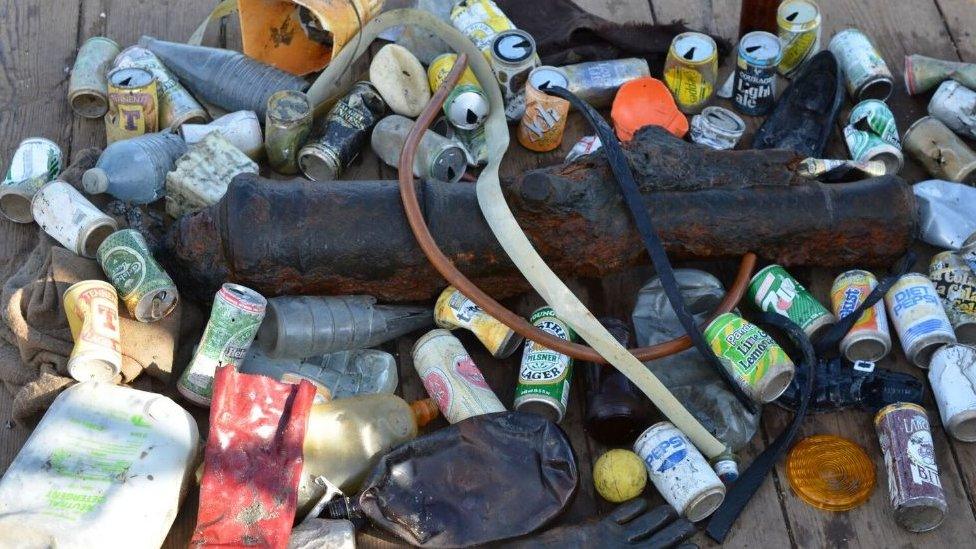
Plastic items, along with metal cans and other rubbish, were brought to the surface along with HMS Invincible's artefacts
Plastic pollution has been found on historical shipwrecks in coastal waters.
Divers from the Marine Archaeology Sea Trust found a "surprisingly large quantity" of rubbish on HMS Invincible's wreck site in Portsmouth Harbour.
Kevin Stratford, from the trust, said such wrecks, proud of the seabed, act as "accumulation points" for rubbish.
He said it could potentially affect the aquatic wildlife colonising wrecks.
Guide: Why is plastic a problem?
Seven charts that explain the plastic pollution problem
The 74-gun HMS Invincible was lost in 1758 when its rudder jammed and it ran aground on a sandbank between Langstone Harbour and the Isle of Wight, before capsizing three days later. No lives were lost.
Mr Stratford said since the site was last dived on in the 1980s, it had filled up with "everything imaginable", including drinks cans, fishing paraphernalia and plastic waste, some clearly from decades ago.
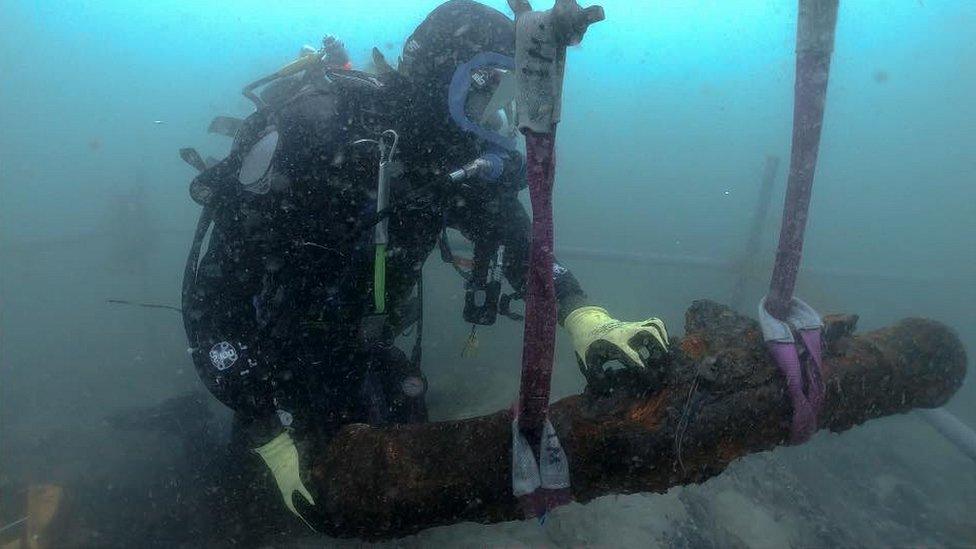
Three swivel guns and other relics were brought to the surface during the excavation
"It gets in the way of the archaeology but is also highlighting the potential for this and other shipwrecks to act as collection points for rubbish," he said.
"The material slowly breaks down in the wrecks and likely pollutes much of the marine life inhabiting them.
"The diving community has long been involved in cleaning up our oceans as we are the people who get to see the high level of pollutants first hand."
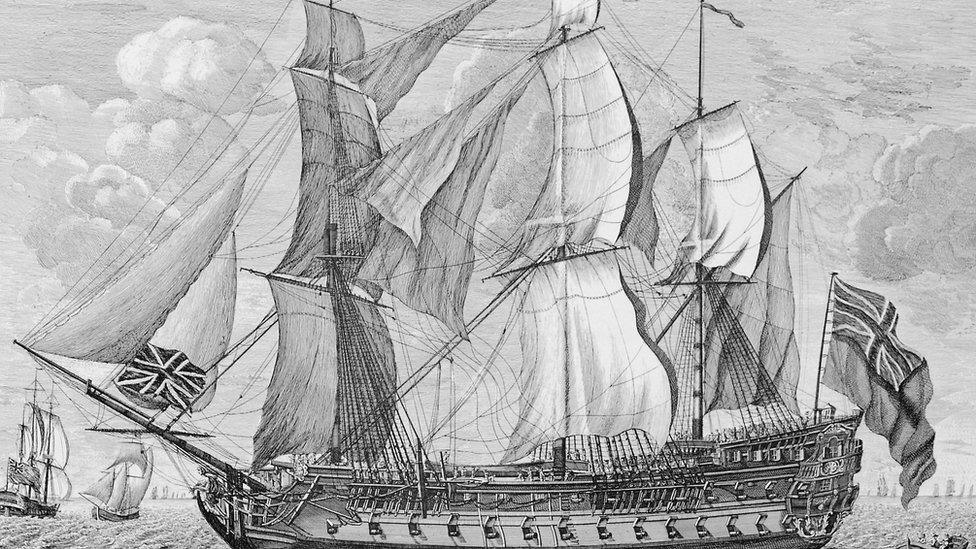
HMS Invincible's class of ships became the "backbone of the Royal Navy", the National Museum of the Royal Navy said
He said other wrecks he had dived on had experienced similar levels of pollution, depending on their position on the seabed.
"Shipwrecks themselves are a form of pollution - they aren't meant to be there, but they do act as a haven for fish and wildlife," he said.
"Because they stand up on the seabed, they stop material being buried and become an accumulation point for everything nasty in the water."
Mr Stratford is looking into carrying out further research comparing plastic pollution on wrecks that had been covered over since the 1980s with others that have been left exposed.
- Published7 June 2018
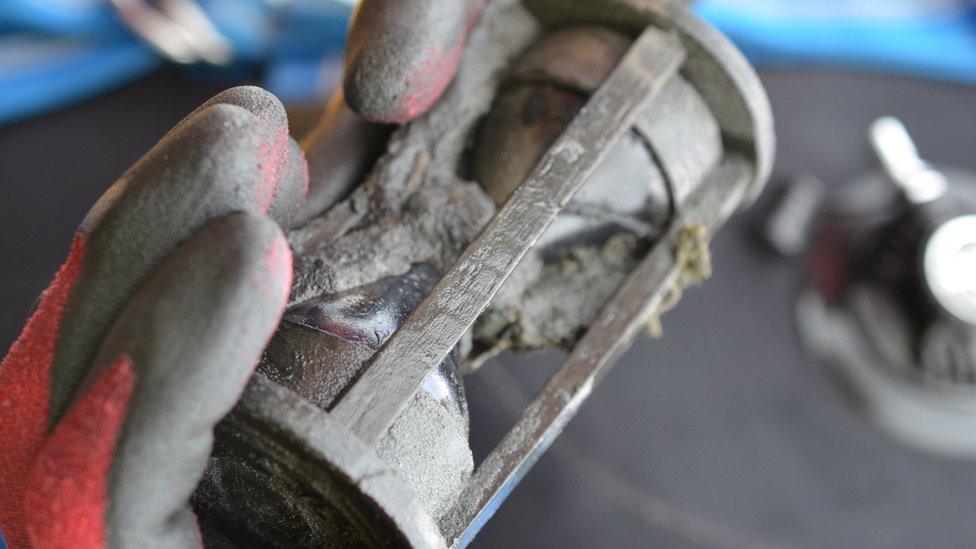
- Published28 November 2017
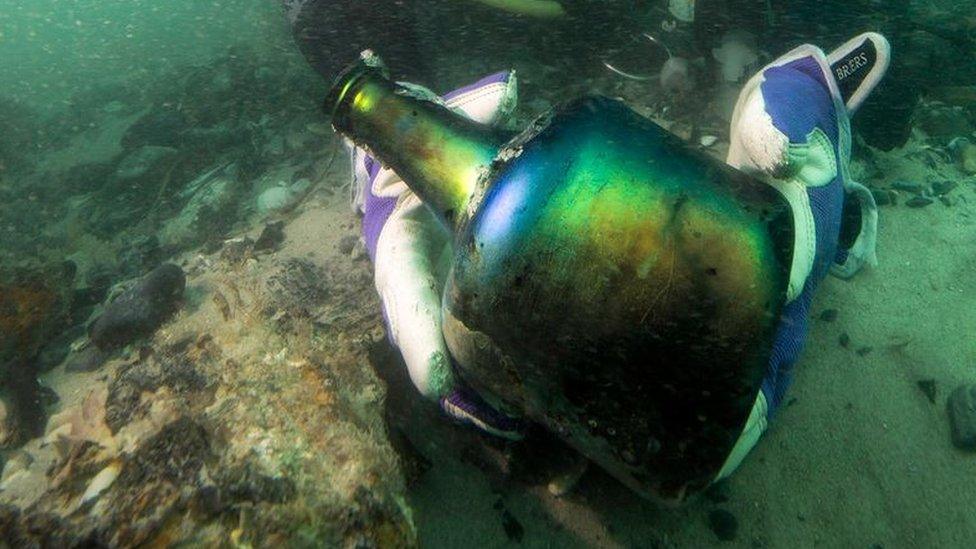
- Published7 July 2017

- Published10 October 2013
